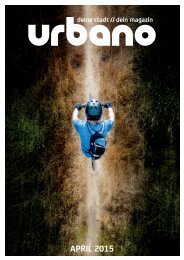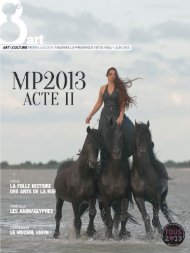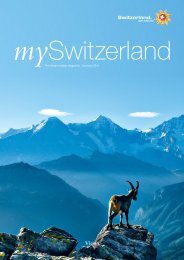Life Nature Magazine
themed ‘Dusk until Dawn’. These times are to me, some of the most exciting to experience wildlife. When I can make it out of bed in time for dawn, the chorus of birds chattering and singing above me makes the wrestle with my tiredness all worth it. As sun sets, some of the most secretive animals come out of their day time hiding places. Foxes and badgers can be seen by the lucky, and bats’ sonar can be heard with a handy bat detector. The time between dusk and dawn is fascinating too. Whilst most of us are tucked up in bed asleep, many animals are exploiting this quieter period, with multitudes of adaptations allowing them to use the darkness to their advantage. From this issue, many of the original team, including myself, are ‘phasing out’. We’re looking for new team members – see the careers section for more information on how to get involved. Whilst some of us will still be involved in the next issue, we’ll be taking less on, so we’d like to thank
themed ‘Dusk until Dawn’.
These times are to me, some of
the most exciting to experience
wildlife. When I can make it
out of bed in time for dawn,
the chorus of birds chattering
and singing above me makes
the wrestle with my tiredness
all worth it. As sun sets, some of
the most secretive animals come
out of their day time hiding
places. Foxes and badgers can
be seen by the lucky, and bats’
sonar can be heard with a handy
bat detector. The time between
dusk and dawn is fascinating
too. Whilst most of us are
tucked up in bed asleep, many
animals are exploiting this
quieter period, with multitudes
of adaptations allowing them
to use the darkness to their
advantage. From this issue,
many of the original team,
including myself, are ‘phasing
out’. We’re looking for new
team members – see the careers
section for more information
on how to get involved. Whilst
some of us will still be involved
in the next issue, we’ll be taking
less on, so we’d like to thank
Create successful ePaper yourself
Turn your PDF publications into a flip-book with our unique Google optimized e-Paper software.
ON YOUR DOORSTEP FROM DUSK UNTIL DAWN AUTUMN ISSUE<br />
Wildlife Watch<br />
October:<br />
Red Deer<br />
October is the peak of the red deer<br />
Cervus elaphus rut. Usually segregated,<br />
congregating into large single sex herds<br />
in open country, in the breeding season<br />
the stags return to the home rage of the<br />
hind deer creating large mixed groups.<br />
Males compete to win access to a group<br />
of females and by protecting their<br />
‘harem’, the dominant male will receive<br />
exclusive rights to mate with them.<br />
November:<br />
Thrushes<br />
By November visiting<br />
thrushes can be seen in large<br />
<br />
<br />
along hedgerows. Common<br />
migrants include redwing<br />
turdus iliacus<br />
turdus pilaris, most of the ones<br />
we see in Cornwall would<br />
have crossed the north sea,<br />
on passage from Scandinavia.<br />
They overwinter in the UK,<br />
departing in early spring.<br />
Redwings are easily spotted<br />
on the Tremough Campus, so<br />
keep your eyes peeled.<br />
Seals<br />
By November grey seal (Halichoerus grypus) colonies are bustling with their<br />
Phoca vitulina,<br />
pups much earlier in June-July. Grey seal pups moult their thick, white coat<br />
after three weeks, at this point their mothers will end their starvation period,<br />
leaving the pups to fend for themselves. Godrevy head in Hayle is a good<br />
place for seeing the new families interact.<br />
Image: red deer: Beth Arkwright, red wing, Hannah Walker;<br />
merveille du jour, Guy Freeman; seal pup, Liselle Fae Jackson;<br />
waxwing, Felix Smith; fungi, Charlotte Sams; moss, Claire Young.<br />
Moths<br />
<br />
moths, the Merveille du<br />
Jour Dichonia aprilina can<br />
be seen on the wing from<br />
late September to October.<br />
Although scarce, it is<br />
widespread, often occurring<br />
in woodland, hedgerows<br />
and gardens around the<br />
UK, in particular those<br />
with high numbers of oaks<br />
- their larval food plant. It<br />
is one of our most beautiful<br />
moths, especially when<br />
newly emerged.<br />
Fungi<br />
October is the month fungal<br />
diversity peaks, with the majority<br />
of the seasonal mushrooms<br />
fruiting. This is a great time<br />
to get into wild foraging as<br />
<br />
<br />
mushrooms emerge. But forage<br />
with caution; many poisonous<br />
species also thrive in October.<br />
These include the unmistakeable<br />
Amanita muscaria<br />
(pictured), as well as species<br />
which are confusingly similar to<br />
edible specimens; false chanterelle<br />
Hygrophoropis aurantiaca can<br />
cause some people serious harm<br />
and looks almost identical to<br />
other edible chanterelles.<br />
December:<br />
Moss<br />
In December when the<br />
temperatures drop really<br />
low, water everywhere<br />
can freeze, causing quite<br />
a spectacle in some<br />
places. Moss has a high<br />
water content, and lives<br />
in damp spots. The soft<br />
moss beds we are used<br />
to are transformed in<br />
to crunchy, icicle laden,<br />
glistening green walls.<br />
Waxwings<br />
During harsh winters, large<br />
<br />
Bombycilla garrulous are forced<br />
south, leaving northern and<br />
central Europe where they<br />
overwinter and visit the UK.<br />
They often make it as far south<br />
as Cornwall, and can be seen<br />
frequenting gardens and car<br />
parks in Falmouth, foraging on<br />
hawthorn Crategus monogyna<br />
and rowan Sorbus aucuparia<br />
berries.<br />
Written by Fraser Bell, MSc<br />
Applied Ecology Alumnus.

















